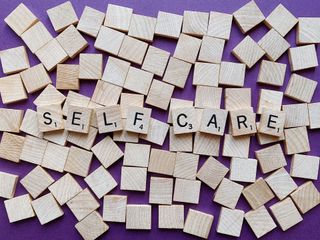Digital wellness goes beyond digital citizenship, says Kerry Gallagher, JD, assistant principal for Teaching and Learning at St. John’s Prep in Massachusetts.
“There is nothing that is problematic about digital citizenship itself, except that it leaves gaps in the concerns that teachers and parents are telling us about,” says Gallagher, who is also the education director for ConnectSafely, an internet safety nonprofit. “It doesn’t get to the kind of content our children are consuming when they're online and how is that impacting how they feel about themselves and their self-confidence and a lot of other areas of overall wellness.”
About four years ago, St. John’s began moving from teaching digital citizenship to a more holistic digital wellness approach.
What is Digital Wellness?
Digital wellness is an all-encompassing approach to teaching students or young people how to interact with technology and the digital world. “There's the digital wellness for the body, digital wellness for the brain, digital wellness for your heart, and then digital wellness for your village,” Gallagher says.
Digital wellness for the body. Part of a good digital wellness program is encouraging students to think about how their interactions with screens are impacting them physically. “How is it impacting your sleep? How is it impacting your eye health?” Gallagher says. “How is it impacting the amount of movement your body gets, like exercise? How is it impacting your nutrition?”
Digital wellness for the brain. Educators should encourage students to examine how their interactions with technology are hampering or helping them cognitively, Gallagher says. They should consider aspects such as their ability to focus and avoid multitasking while still being creative.
Digital wellness for the heart. “The heart is really emotional wellness,” Gallagher says. This encompasses elements such as helping children explore different identities in a safe manner online and discover what they’re passionate about.
“We want to make sure we're talking openly with kids about things like FOMO that can happen when they're interacting online and body-image issues that can happen when they're interacting online,” she says.
She adds that young people need to learn that what people showcase on their social media feeds is highly curated. “There's nothing wrong with people posting their highlight reel. Who wants to post, ‘And I also broke down and cried this afternoon’? I don't expect people to do that. But it's important for kids to understand that the person [they see on social media] is also having real emotions just like you and their life isn't perfect.”
Digital Wellness for your village. Learning to use technology to foster relationships with friends and family, as well as professional-type relationships with teachers and experts in fields they are interested in, is important for students.
“We want to encourage our kids to be civically active,” she says. “There are opportunities, even before you’re voting age, to engage with causes that you're passionate about, learn more about them, and post to support causes or charities that you believe in. And there's nothing wrong with our kids being passionate about things that are in the service of other people, or being passionate about causes that will help improve our society even before they're adults.”
Implementing a Digital Wellness Program
At St. John’s Prep, implementing a successful digital wellness program means collaborating with teachers, parents, and students.
“An overarching construct is that you need to work with teachers first,” Gallagher says. So the first step in implementing their digital wellness program was meeting with teachers from each department and providing them with a definition of digital wellness. “Then we spent most of the time with them talking about how it integrates naturally into their curriculum,” Gallagher says. “I may be somebody who has done a lot of research on digital wellness, but my math teachers are the experts in math. So how does it fit into how they teach everyday in the classroom?”
Next up is connecting with parents. Gallagher provides a weekly digital wellness tip that goes out to members of the school community and regularly meets with parents to talk about their concerns around their children and technology use. “I appreciate every opportunity to talk to a parent about healthy tech use,” she says.
Student participation and buy-in is, of course, also an essential component of having a successful digital wellness program. “We have community guidelines and norms that we crafted alongside our students around what digital wellness looks like at our school, and those are posted in every single classroom,” Gallagher says. “So if there's a child who kind of goes outside those norms, it's really easy for anyone in the community, either a peer or teacher, to point to it and be like, ‘Hey, that's not what we do here.’”
This multi-pronged approach helps make digital wellness an essential part of the school day. “We want it to be something that's a part of our culture and not something that's special,” Gallagher says. “It's a part of everything that we do.”

